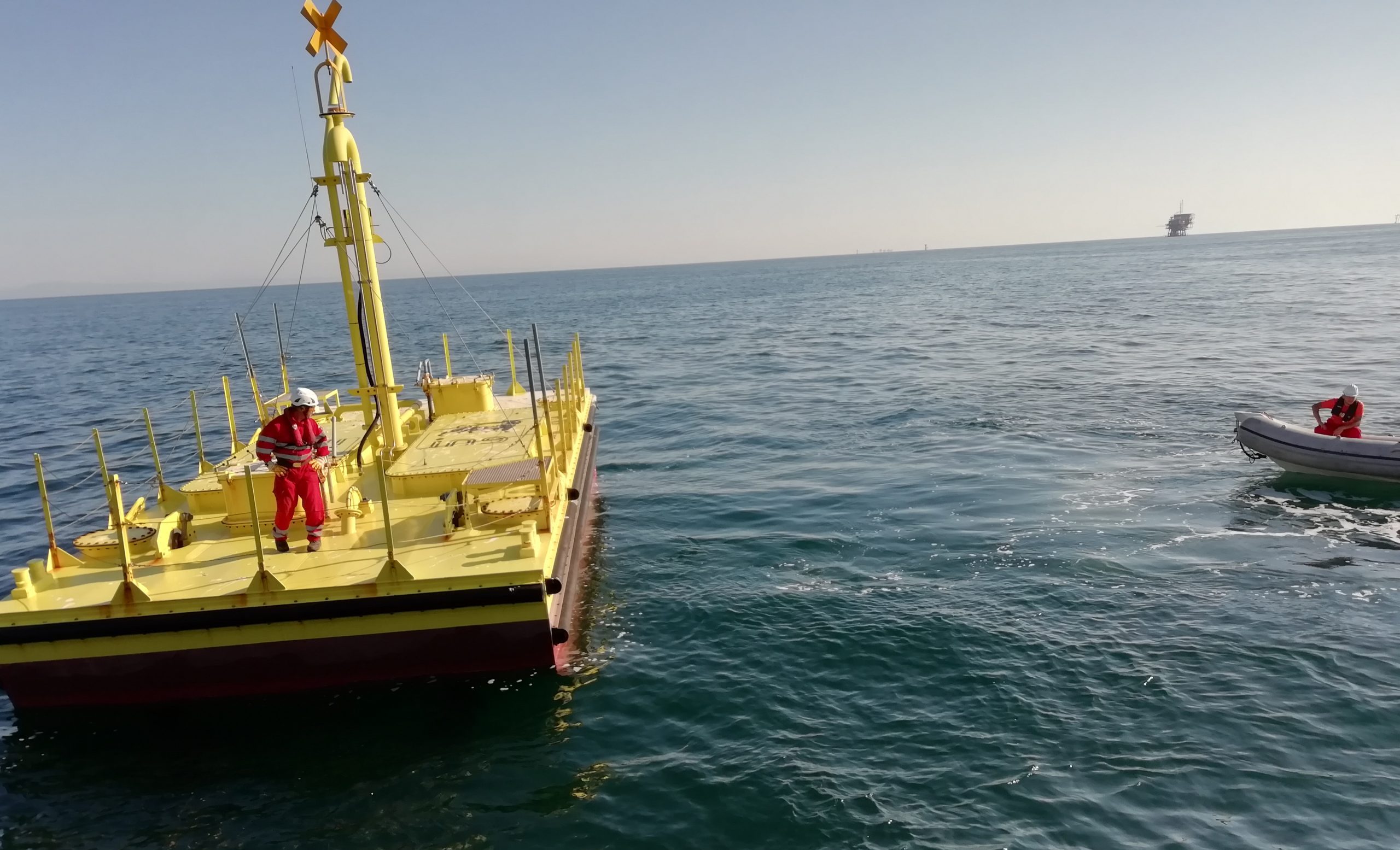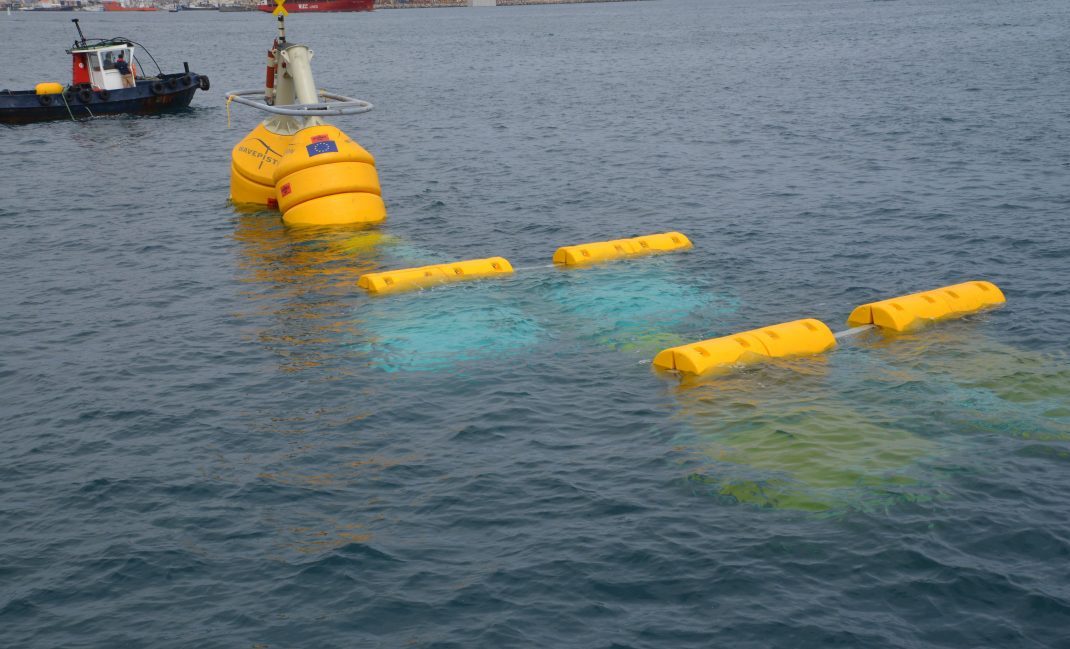Mercator Ocean International and Ocean Energy Europe collaborate on Copernicus Marine Service

12.02.2024
Discover the partnership between Mercator Ocean International and Ocean Energy Europe (OEE), renewing their commitment to leverage Copernicus Marine Service data for advancing ocean energy. Uncover the strategic role of Copernicus, Europe’s earth observation program, in providing indispensable data for tidal stream, wave, and other ocean energy technologies. Explore how this collaboration, building on past successes, aims to expand Copernicus Marine Service adoption, with upcoming use cases and an interactive event in spring 2024, ensuring a sustainable and innovative path for Europe’s ocean energy sector.
Collaboration between Mercator Ocean International and OEE
The collaboration between Mercator Ocean International and Ocean Energy Europe continues, aimed at fostering the use of Copernicus Marine Service data in the ocean energy sector. This initiative builds upon their successful partnership established in 2018, which saw a remarkable 30% surge in users from the ocean energy sector within the first year.

Copernicus, Europe’s flagship earth observation program, delivers free data on global and regional ocean and sea conditions through its Marine Service. This service provides essential data from satellites, in-situ sensors and numerical models on variables such as ocean temperature, salinity, currents, and sea levels – vital for decision-making in the ocean energy domain. The European Commission has entrusted Mercator Ocean International, a non-profit organisation that provides ocean science-based services, with the management of the Copernicus Marine Service.
OEE represents over 120 members from both private and public sectors engaged in ocean energy. As such, it stands as the largest and most representative network of ocean energy professionals in the world. The association’s members, including device developers, utilities, engineering companies, research institutes, and more, stand to benefit significantly from accessing Copernicus Marine Service data for their business and research activities.
Different sources of ocean energy
Ocean energy, renewable energy generated from ocean waves, tides, or differences in water temperature and salinity, offers significant opportunities in diversifying the energy mix.
– Tidal stream uses tidal currents to generate electricity. Tidal stream energy production is predictable hundreds of years in advance because it is influenced by well-known cycles of the moon, sun and earth. In Europe, the best tidal resource is located in Scotland, France and the Faroe Islands.
– Wave energy is generated by converting the movement of waves into electricity. Waves are created by the wind and go on hours or days even after the wind stops. This complementarity makes wave energy the perfect partner to wind. The European wave energy resource is abundant: wave farms can be deployed off the Atlantic coast from Portugal all the way to Norway, as well as in many locations in the Mediterranean Sea. In addition to utility scale production, wave energy can power offshore industries such as aquaculture and oil & gas platforms.
– Ocean Thermal Energy Conversion (OTEC) plants use deep cold seawater and warmer surface seawater to produce electricity. OTEC works best with at least a 20°C water temperature difference and could therefore help decarbonise tropical areas – including EU oversea territories – which currently rely on costly and polluting fossil fuels.
– Salinity gradient generates electricity from the difference in salt concentration between seawater and fresh water. Salinity gradient power generation is available 24 hours a day, making it a solid baseload energy source.
Ocean energy is ready for industrialisation
The first tidal stream pilot farms have been producing electricity for the past 8 years. The industry is now preparing to deploy the second wave of pilot farms as the next step to commercialisation. In wave energy, developers are demonstrating their full-scale devices, with the first pilot farms on the way. Both OTEC and salinity gradient have prototypes in the water, and more research is needed to improve the technology and reduce costs.
In 2023, the ocean energy sector experienced a big push. The UK announced their second round of ‘Contracts for Difference’ feed-in tariff that will enable the deployment of over 90 MW of tidal projects over the next few years. France financed its first 17 MW tidal farm with a grant and a feed-in tariff. The EU funded two tidal pilot farms and two wave energy projects through its Horizon Europe and Innovation Fund programmes.Moving from pre-permitted test sites to new locations brings up new requirements. Developers will need data on current speeds, wave heights and surface wind to determine ideal project sites. This helps lower development costs, refine known markets and identify new markets. Simultaneously, ongoing research requires access to oceanic data for enhancing device efficiency, availability, and survivability.
Current use of Copernicus Marine Service in the ocean energy sector
Several ocean energy companies and researchers already use Copernicus Marine Service products to find suitable sites for projects in Europe and beyond. The previous collaboration between Mercator Ocean International and OEE showcased the widespread use of Copernicus Marine Service data throughout the whole project life cycle – from environmental impact assessments to site selection and power production forecasts. The data is also used for device design and optimisation of installation, operation and maintenance processes.
The use cases developed during the previous collaboration covered technology developers and universities using Copernicus Marine Services, such as:
– Wavepiston, a wave energy developer, used Copernicus Marine Service data to perform quick assessments of the feasibility of wave sites in the North Sea and the Mediterranean and to conduct potential power generation simulations on given project sites.
– The University of Edinburgh used the In Situ Reprocessed and Near-Real-Time products for the Global Ocean, as well as the different seas, to produce high-resolution maps of sea surface salinity and temperature in the global ocean.
Future collaboration: Further use cases and interactive event
Looking ahead, the renewed collaboration between Mercator Ocean International and OEE aims to further foster the uptake of Copernicus Marine Service products in the ocean energy sector. Over the next year, OEE and Mercator Ocean International will carry out activities to raise awareness on the Copernicus Marine Service data in the ocean energy sector and gather feedback from current users to help improve the services.
The primary focus will be the production of comprehensive use cases that illustrate the practical application of Copernicus Marine Service data within the ocean energy sector. This strategic initiative will encourage broader adoption of Copernicus Marine Service products among a wider audience of potential users. Each use case will offer an in-depth portrayal, outlining the user’s profile, the specific Copernicus Marine Service data employed, the purpose of its utilisation, and the tangible benefits derived from using this data.
These use cases will be presented at an upcoming online event intended to engage with prospective users of Copernicus Marine Service data in the ocean energy sector. The event will offer a platform for potential users to directly interact and exchange with experts from Copernicus Marine Service. Scheduled for spring 2024, this event will serve as an invaluable opportunity for ocean energy stakeholders to explore the advantages of integrating Marine Service data into their activities.
Benefits of Copernicus Marine Service data for ocean energy and beyond
Expanding the user base of Copernicus Marine Service data within the ocean energy sector will support project development and ultimately accelerate the deployment of ocean energy in Europe. This collective effort not only reinforces Europe’s leadership in ocean energy but also supports the EU’s decarbonisation goals, aligning with the EU Green Deal’s vision for a sustainable future.

